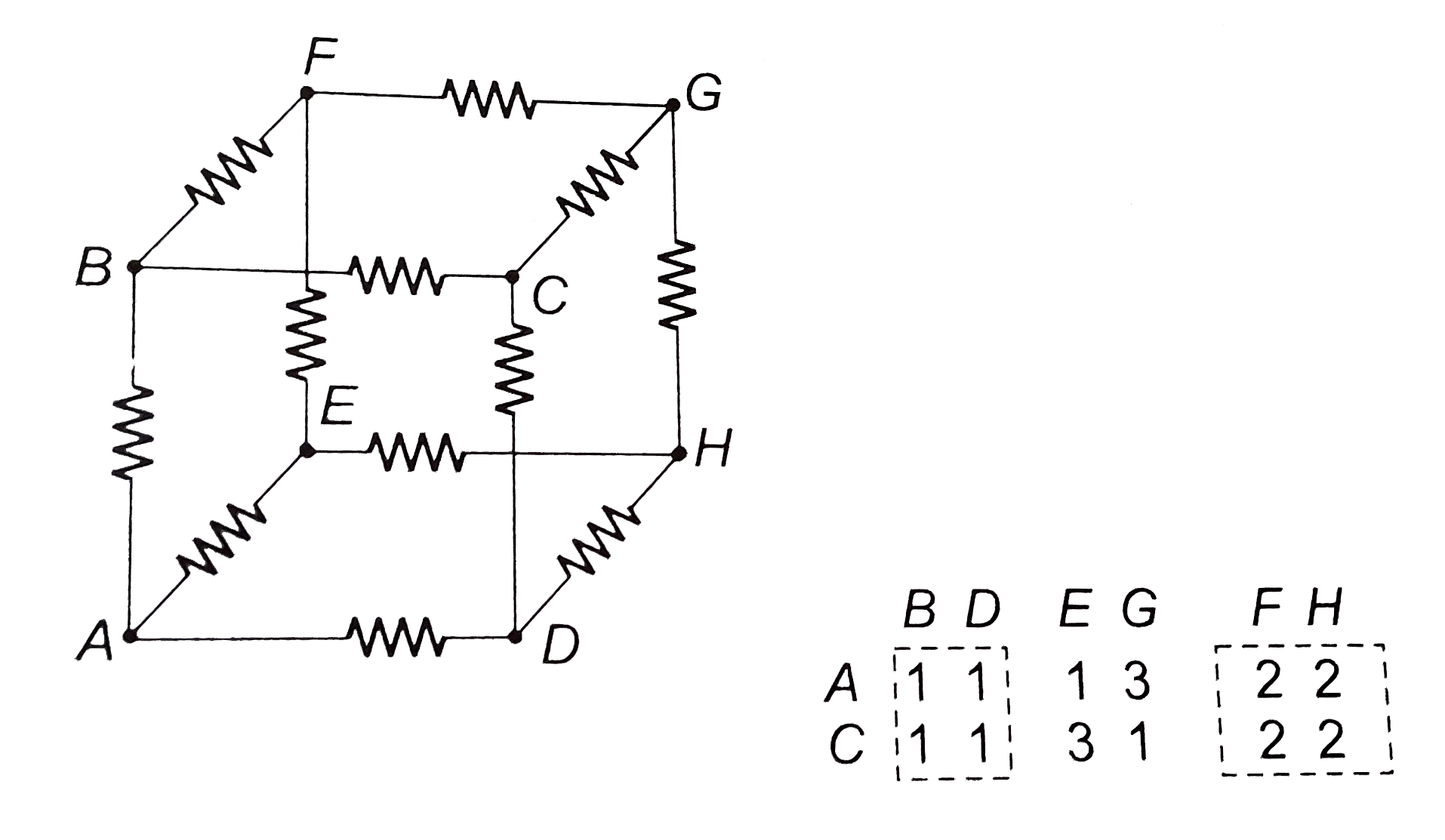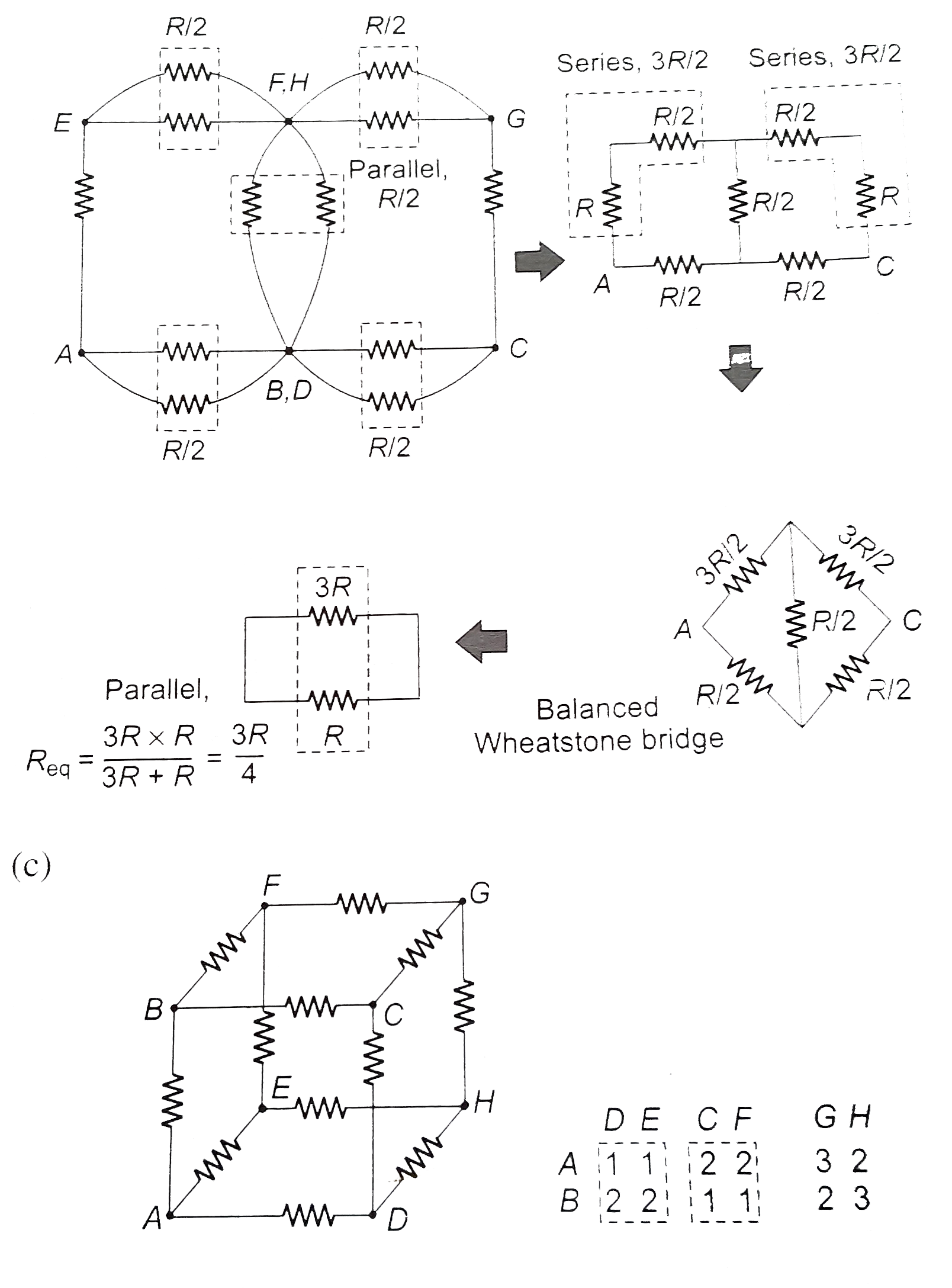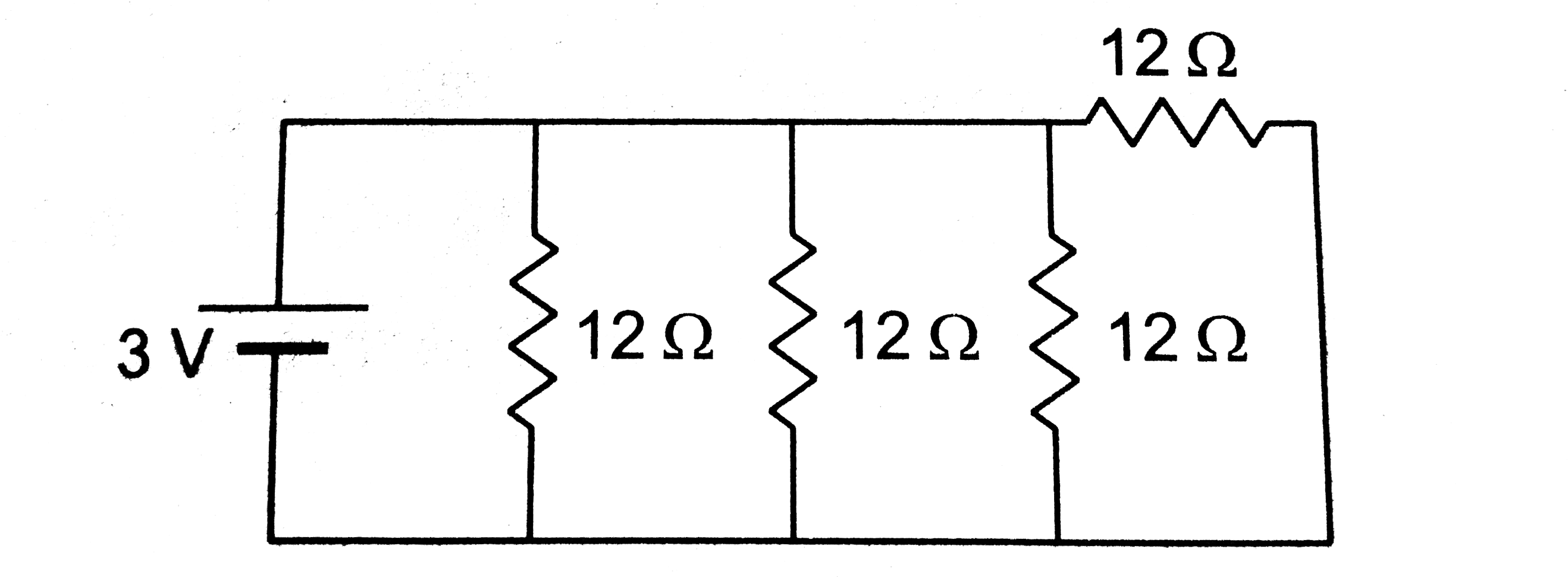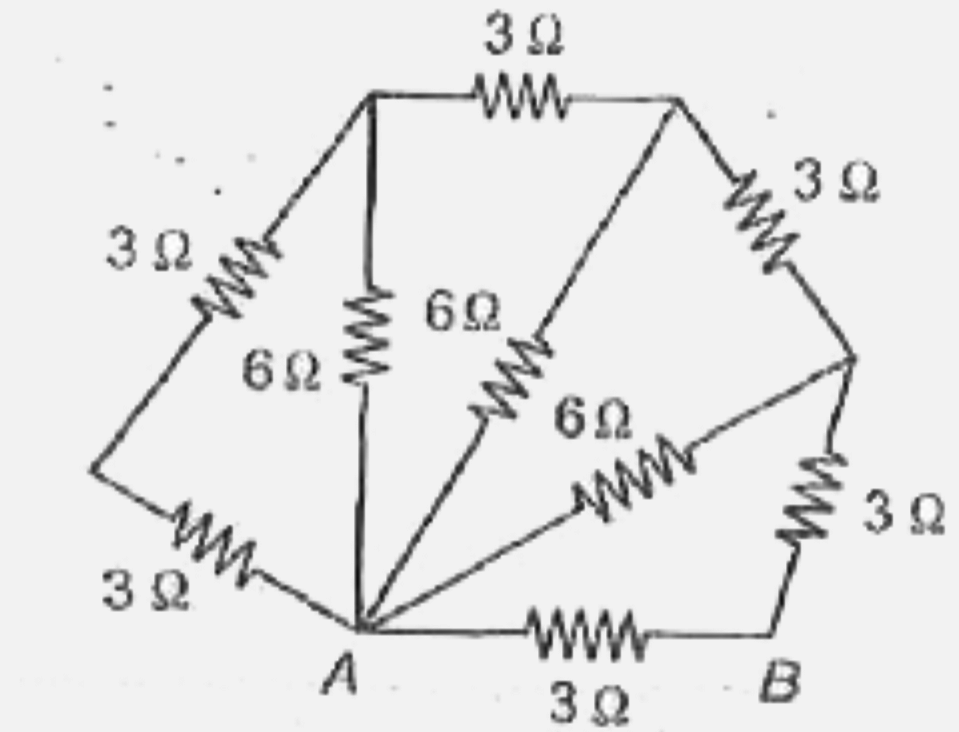Twelve identical resistances arranged on all edges of a cube. The resistors are all the same. Then find the equivalent resistance between the edges A and B as shown in figure.

(a) All resistances are R
B,D,E are at the same potential
C,F,H are at the same potential
Make new diagram by placeing B,D,E at one place and C,F,H at another place.
 .
.

(b)All resistance are R
B,D are at the same potential
F,H are at the same potential
Make new diagram by placing B and D at one place and F and H at another place and then solve.
 .
.

( c) D and E are at the same potential
C and F are at the same potential
Make new diagram by placing D and E at one place and C and F at another place.
 .
.
Topper's Solved these Questions
Similar Questions
Twelve identical resistances arranged on all edges of a cube. The resistors are all the same. Then find the equivalent resistance between the edges A and B as shown in.

View SolutionTweleve indentical resistor are arranged on all edfges of a cube. Then find the equivalent resistance between the corners 1 and 6 as shwon in fig 5.126(us nodal method)

View Solution
Knowledge Check
The equivalent resistance between A and B for the mesh shown in the figure is
 A16ΩB30ΩC4.8ΩD7.2Ω
A16ΩB30ΩC4.8ΩD7.2ΩFind the equivalent resistance between A and B in the given figure.
 A18ΩB2ΩC9ΩD6Ω
A18ΩB2ΩC9ΩD6ΩFind the equivalent resistance between the point a and b of the network shown in figure.
 A3B2C1D5
A3B2C1D5
Find the equivalent resistance between point a and b in the network shown in figure.

View SolutionFind the equivalent resistance between the point a and b of the circuit shown in figure
View SolutionFind the equivalent resistance between A and B in the give figure .

View SolutionA number of resistors are connected as shown in the figure. The equivalent resistance between A and B is

View SolutionThe equivalent resistance between A and B for . the circuit shown in this figure is

View Solution
